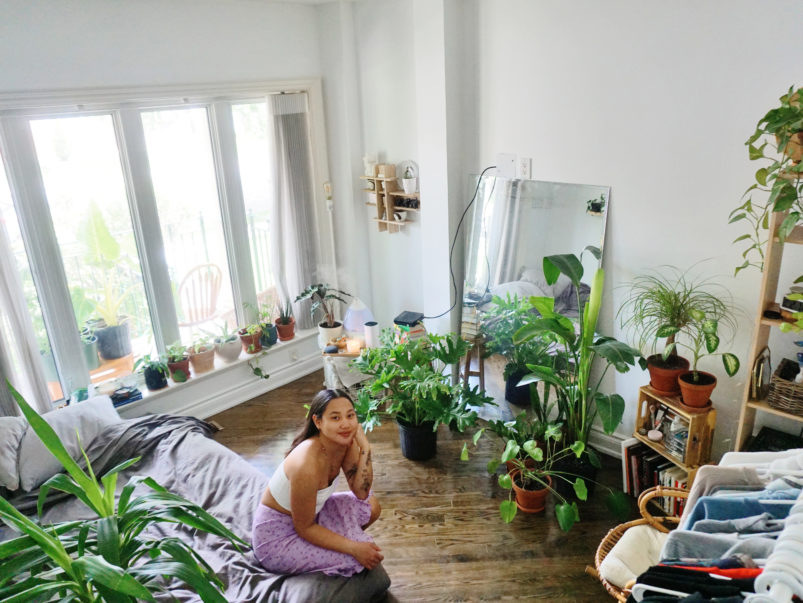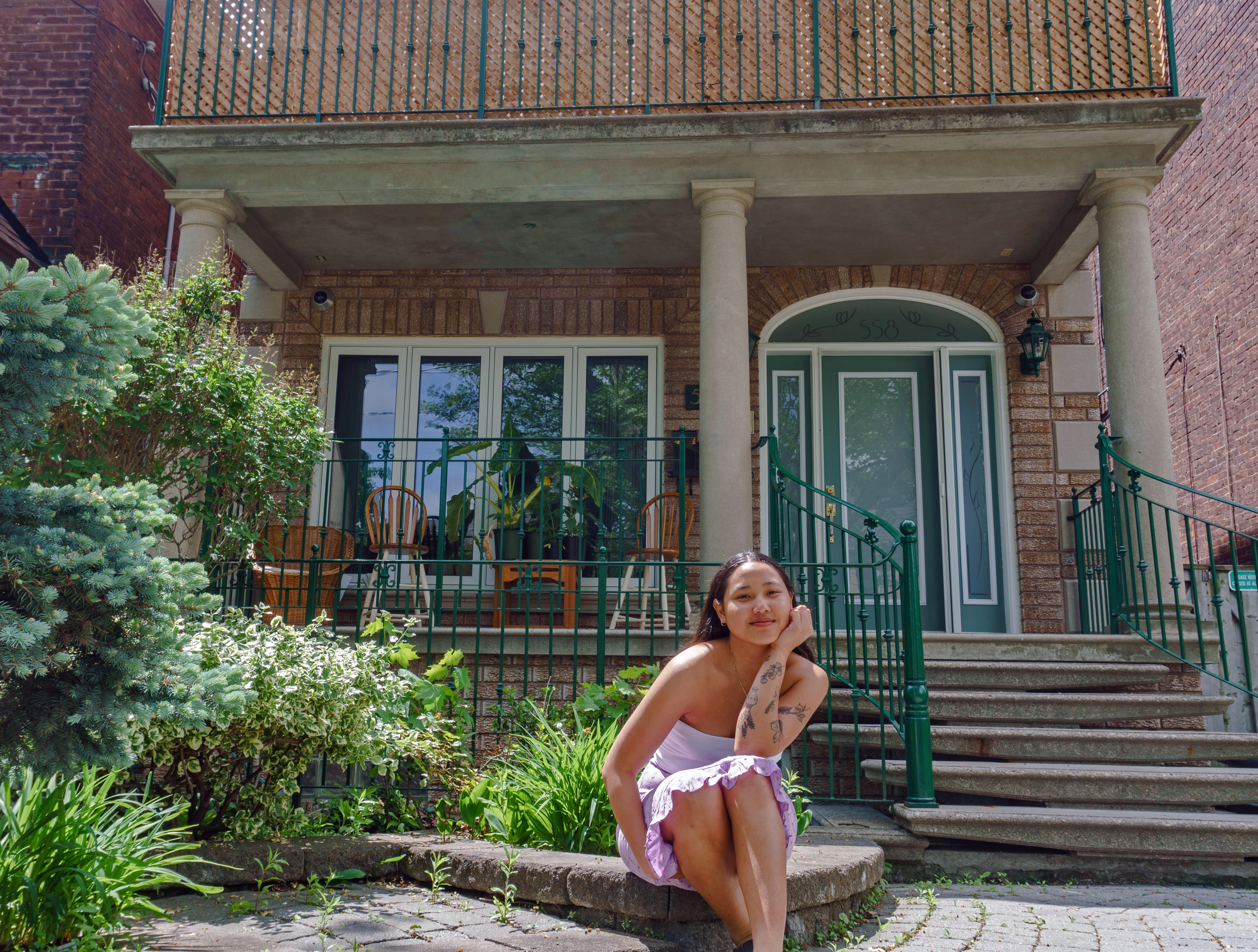This barista went from making $33,000 to collecting CERB. But did the pandemic alter her spending habits?

Who: Arriane Liangcungco, 23
What she did pre-pandemic: HR recruiter and part-time barista at Jimmy’s Coffee
Where she lives: with two roommates at a three-bedroom duplex in Dufferin Grove
Liangcungco was born in a small town in the Philippines, then moved to Toronto with her family in 2007. For her first job, in high school, she worked as an after-school daycare provider, making $10 an hour. In fall 2015, she enrolled in the early childhood education program at Ryerson. But she dropped out soon after, deciding instead to pursue a more lucrative career in human resources. So, in 2016, she started the business administration program at George Brown.
From 2016 to 2019, as a full-time student, Liangcungco worked a variety of part-time jobs. She waited tables, bartended, worked as a barista. That money went towards paying off her tuition, which totalled roughly $12,000 after three years. She still owes about $3,000 to OSAP for the last semester.
In early 2020, Liangcungco lived in the attic apartment of a five-bedroom house at College and Bathurst, paying $1,100 a month. She earned a monthly stipend of $250 as an intern at a human resources company and brought in $30 an hour, including tips, from her job as a barista at Jimmy’s Coffee. She planned to continue her education with a two-year human resources management program at Ryerson, which was supposed to start in the fall of 2020.
Liangcungco has always been good with money. Pre-pandemic, she was putting away $1,000 a month, and always maintained a balance above $1,000 in her chequing account. “If I have less, I feel broke,” she says. Her goal was to save up for a trip to visit relatives back in the Philippines. Whatever was left, she spent hanging out with her friends on the weekends. They would buy drinks, snacks and order in food, before going out dancing. Liangcungco’s long-term financial goal was to eventually purchase properties in Toronto and the Philippines.

Pre-pandemic monthly income: $2,750 a month
Rent: $1,100 a month, which included hydro, gas and internet. “I had the entire top floor and a bathroom.”
Cellphone: $101 a month, with Fido. “I’m still paying off my iPhone 8. But my plan is pretty good—10 gigs and unlimited call and text within Canada and the U.S.”
Credit card repayment: $50 a month. “I have a $3,000 limit and try not to go beyond $1,000, because it gets too difficult to pay off with my income.”
Life Insurance: $54 a month, with Ivari.
Groceries: $300 a month. “I walked or biked to Walmart at Dufferin Mall. I usually bought noodles, bok choy, broccoli, eggplant and other veggies to make stir fries.”
Eating out: $200 a month. “I liked tapas-style bars, like Odd Seoul, SoSo Food Club and Patois.”
Bars: $200 a month, at Cold Tea, Apartment 200 or The Baby G.
Music: $14 a month, for Spotify.
Transport: $250, for a bike from Ride Away Bikes on Dundas. “I bought it used, then spent about $200 on parts, including brakes, wheels and new handles. That’s how I got to work and school.”
Travel: $950, for a trip to the Dominican Republic in December 2019. “I was never sober. I went swimming, tanned, listened to music and met a lot of people.”
Plants $145, from a convenience store in Kensington Market. “I love taking care of plants. I feel like you can decorate any space with them, instead of splurging on home decor.”
In early March, at the beginning of the pandemic, her landlord told her that she was selling the house at College and Bathurst. So, Liangcungco had to find a new place to live before the end of the month. Around that time, she was also laid off from her job at Jimmy’s Coffee. Her manager said that she’ll be able to work there post-pandemic, but in the meantime, she had to apply for CERB.
Once she got settled in her new place, a three-bedroom duplex in Dufferin Grove, she received even more bad news: her internship at the human resources company had ended because of the pandemic. Since then, she has spent most of her time gardening and decorating her new apartment. She bought a new bed from IKEA, and also found some second-hand furniture from Value Village.
Liangcungco says she’s been saving a lot since the start of the pandemic. “I’m not going out, eating and drinking, which accounted for most of my spending.” After the pandemic, she plans to fly to the Philippines and backpack in Asia. She’s dedicated to finishing school in the fall, even if that means taking online classes. Despite everything, Liangcungco says the pandemic has been a blessing in disguise, since it has allowed her to take care of herself. “Up until this point, I was working seven days a week. Now I’ve had a chance to slow things down and figure my life out.”
Monthly income now: $2,000 from employment insurance
Rent: $925 a month. “At least my rent is cheaper at the new house.”
Credit card payment: $50 a month. “I try to use my debit card as much as possible, because I only want to spend money that I actually have. I only put UberEats and groceries on my credit card.”
Groceries: $400 a month. “My dad’s meat factory is an essential service, so it’s open, and he gives me all kinds of meat. This number went up, because now I’m eating at home more.”
Cat food and litter: $50 a month, for her new cat Rumi. “My old roommate at College and Bathurst gave her to me when we moved out, because she was moving into a place with too many pets. It worked out perfectly.”
Bars: $0. “I definitely miss dressing up and going to the bars with my friends,” she says. “I’ll 100 per cent be going out when things open back up.”
Ordering in: $110 a month, with UberEats. “I’ve been getting delivery a lot during the lockdown. I like to get the panang curry from Thai Elephant and the spicy chicken habanero burger from A&W.”
Furniture: $380, for a bed from IKEA, along with a second-hand shelf and night table. “They were the only things I had to buy for my new place.”
Satin sleeping gown: $45, from Amazon. “I have to share a bathroom at my new place, so it helps me cover up at night when I’m walking around.”
Books: $47, from Amazon. “I bought The 7 Habits of Highly Effective People and two erotica novels by Japanese author Junichiro Tanizaki. I really wanted to read a self-help book during the quarantine.”
Plants: $0, for snake plants, pothos and a dracaena tree. “When I left Jimmy’s, they let me take home the plants that were leftover in the store. Now I’ve got them in my new place.”
Has Covid-19 impacted your spending habits?
Email us at costofliving@torontolife.com.





